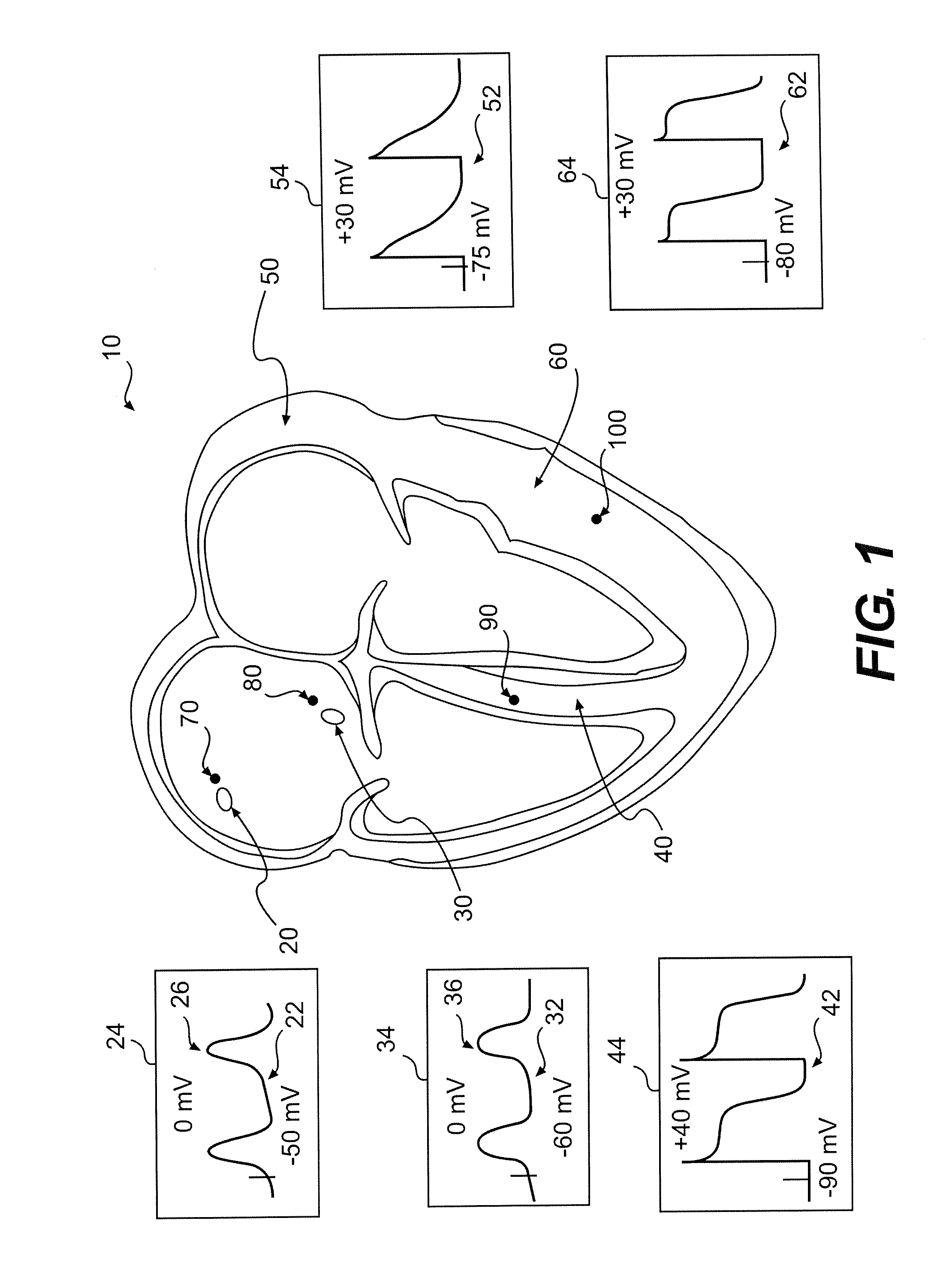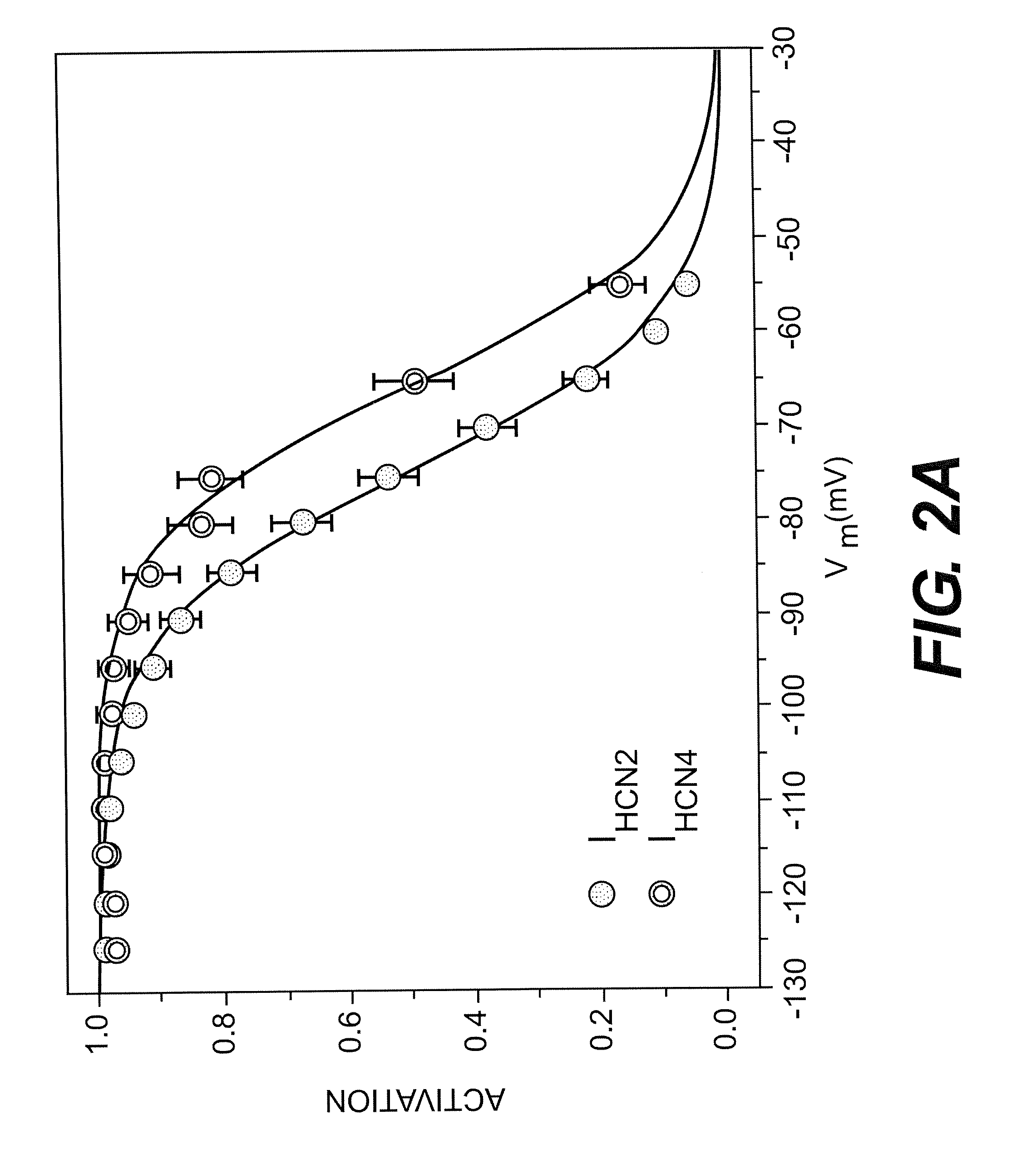System And Method For Local Field Stimulation
a local field and stimulation technology, applied in the field of local field stimulation, can solve the problems of slow-progressing conduction disturbance, inefficiency of contraction, and inability to respond to autonomic influences, and achieve the effect of increasing or decreasing the rate of depolarization
- Summary
- Abstract
- Description
- Claims
- Application Information
AI Technical Summary
Benefits of technology
Problems solved by technology
Method used
Image
Examples
Embodiment Construction
Native Cardiac Function
[0042]FIG. 1 illustrates a heart 10 and shows typical action potential (AP) waveforms from different heart regions. In a healthy heart a sino-atrial (SA) node 20 generates an AP 24 that propagates along various conduction pathways to other regions of the heart. Typically, AP 24 generated by SA node 20 travels through the right atrium to an atrio-ventricular (AV) node 30. From AV node 30, the AP travels out along conduction pathways to other heart regions, including the His-Purkinje fibers 40, the left atrium 50, and the left ventricle 60, leading to a coordinated contraction of the different heart chambers and efficient blood ejection.
[0043]APs observed from different regions of the heart often have different morphologies to AP 24 generated by SA node 20. As shown in FIG. 1, cells of AV node 30 typically generate an AP 34, while cells of His-Purkinje fibers 40 typically generate an AP 44. Cells of left atrium 50 and left ventricle 60 typically generate an AP 5...
PUM
| Property | Measurement | Unit |
|---|---|---|
| current density | aaaaa | aaaaa |
| diameter | aaaaa | aaaaa |
| distance | aaaaa | aaaaa |
Abstract
Description
Claims
Application Information
 Login to View More
Login to View More - R&D
- Intellectual Property
- Life Sciences
- Materials
- Tech Scout
- Unparalleled Data Quality
- Higher Quality Content
- 60% Fewer Hallucinations
Browse by: Latest US Patents, China's latest patents, Technical Efficacy Thesaurus, Application Domain, Technology Topic, Popular Technical Reports.
© 2025 PatSnap. All rights reserved.Legal|Privacy policy|Modern Slavery Act Transparency Statement|Sitemap|About US| Contact US: help@patsnap.com



